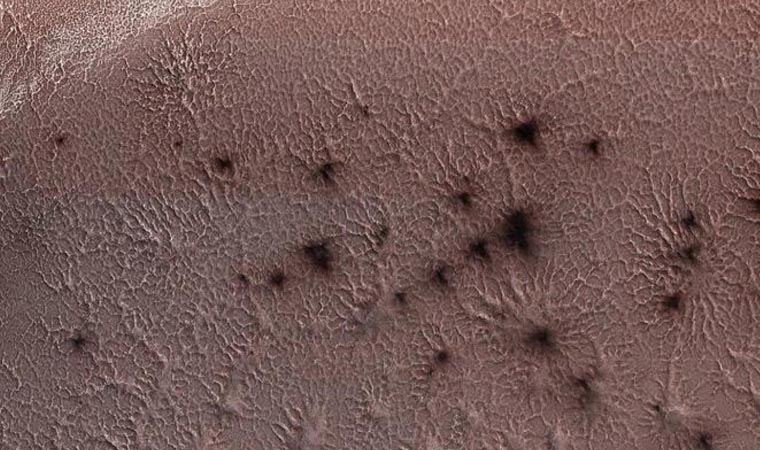These shapes, called araneiform, consist of pits located in the south polar regions of the planet. Such pits have never been seen before on Earth or on any other planet in the Solar System. This makes spider shapes both more mysterious and difficult to understand how they were created.
Independent in Turkish According to the scientists in the new research, “Kieffer hypothesis” He obtained the first physical evidence to support the most popular theory of these shapes, known as
According to this hypothesis, spider shapes emerge with the sublimation of frozen carbon dioxide, that is, directly from liquefying into gas.
Gezegenbilimci Lauren McKeown, “This research provides the first experimental evidence for the process that is thought to alter Mars’ polar landscape.” said:
“The Kieffer hypothesis has been accepted for more than 10 years, but so far it has remained entirely theoretical. Experiments show that the spider shapes we observe from the Martian orbit can arise from direct transition of dry ice from solid to gas.
MARS SEASONS AND SPIDERS
Mars’ axis tilt is very close to that of Earth. This is that seasonal temperature changes are very similar to Earth; This means that there are significant decreases in temperature in autumn and winter, and increases again in spring and summer.
On the other hand, the atmosphere of Mars is very different from Earth’s. This much thinner atmosphere is mostly (about 95 percent) carbon dioxide. The planet is also much further away from the Sun, so the seasons are much colder. When winter comes, carbon dioxide in the atmosphere freezes on the surface, especially at higher latitudes.
In 2006 and 2007, geophysicist Hugh Kieffer and his colleagues suggested that in the spring this frozen carbon dioxide sublimed and was trapped under translucent plates.
According to this theory, as the gas heats up and expands, the pressure increases and cracks the plate. Thus, it creates holes for the gas to escape. As the gas pours into the holes, it forms a spider-like channel system on the surface of Mars.
The gas then blasts upward rapidly, with the materials ruptured by pressure. When the top ice sheet finally melts, these shapes, called araneiform, remain.
Kieffer has noted that this hypothetical process is unlike anything observed on Earth. However, this process has never been observed on Mars. Scientists have only seen these spider-like structures in satellite images. That’s why McKeown and his team designed an experiment to observe this process in a lab environment.
In the experiment “Leidenfrost effect” It was benefited from a phenomenon known as the so called, which is frequently encountered in daily life. This effect occurs when a drop of water is placed on a surface warmer than the evaporation point of the water and splashes into the air.
For the experiment, the research team created a special environment in which the pressure in the Martian atmosphere is simulated. An ice sheet of carbon dioxide was then placed on a surface covered in tiny glass grains, symbolizing the dust on the Red Planet, and a single hole was drilled.
Watching the process that took place here, the researchers observed that the ice began to sublimate and the resulting gas filled the hole. Later, the team lifted the ice sheet and found that a spider-like channel system formed at the point where the gas escaped from the hole.
The team repeated the experiment with grains of different sizes to observe how different textures on the surface affected the result. And it turns out that the smaller the size of the grain, the more branched and knotted the pattern.
Thanks to this experiment, scientists have proven for the first time that Kieffer’s process could indeed occur.
The findings suggest that carbon dioxide sublimation on Mars can also be conceived in other strange ways that have been the subject of discussion in the scientific world.
The research team hopes that more work on araneforms will shed more light on the planet’s stunning seasonal processes.
–


